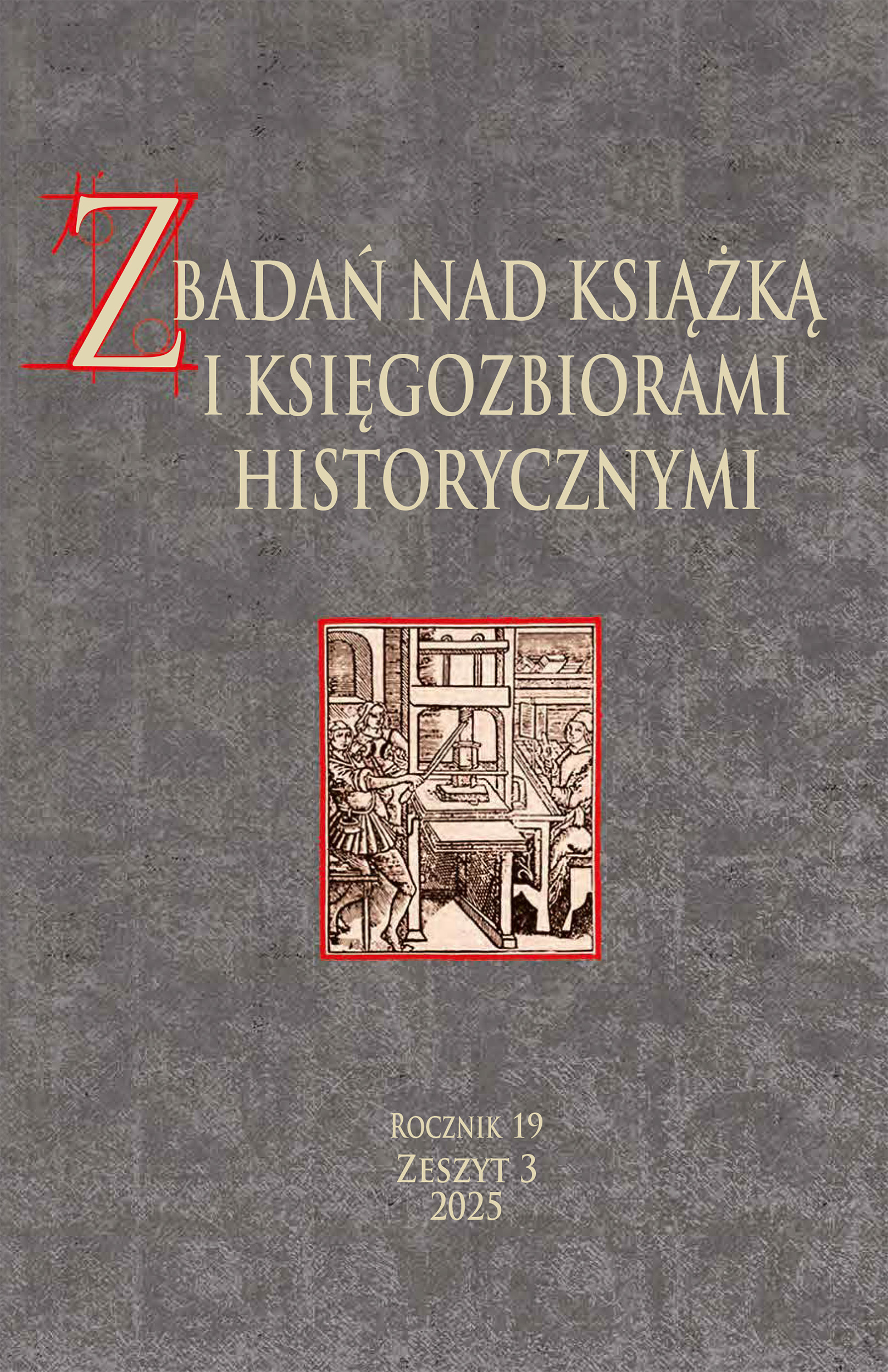The Role and Signifi cance of the Formal Description of the Book in Research on Books from the First Half of the 19th Century
DOI:
https://doi.org/10.33077/uw.25448730.zbkh..312Keywords:
Formal Description of the Book, Research on Books, First Half of the 19th Century, Collations, call number positioning, fingerprint.Abstract
The author postulates the need of abandoning in the formal description of nineteenth-century books the use of the schematic method and of the MARC 21 record bibliographic format, which was devised for the standard contemporary book, not a historical one. The type of bibliographic description, which is currently in use, is aimed at optimizing registration procedures and effectiveness, but it is barely suitable for facilitating research on the editorial aspects of nineteenth-century prints. On the instance of pirate prints of the comedies by Ludwik Adam Dmuszewski (1777–1847), Jacek Paulinek demonstrates that the currently used system is helpless even with regard to distinguishing editions, which is the fundamental function of a bibliographic description. He points out that with respect to early nineteenth-century prints, a much more elaborate system of description should be used, one which would enable the user to distinguish editions without the necessity of personal inspection of the copies themselves. In this description, special attention should be paid to the transcription of the title and the data concerning the publishing house, date, and place. These items should be literally copied from the book. More care is also necessary in describing the content of the book (dedication, colophon, subscribers listings, simultaneously published works, and in particular the booksellers catalogues). The author is convinced that the best solution would be to borrow some of the methods used by the cataloguers working on old prints (16th – 18th c.), like the collations, call number positioning, or the fingerprint.






